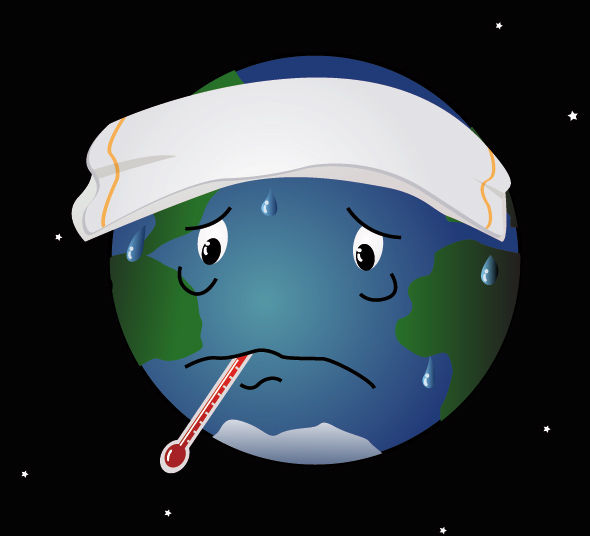




Causes and effects of the increasing concentration of CO2 in the atmosphere.
EFFECTS
It's well known that carbon dioxide is a greenhouse gas, but just what does this mean, and what are the possible consequences of global warming?
Radiation from the Sun heats Earth's atmosphere, oceans and land, making life on Earth possible. The incoming radiation can easily pass through the outer atmosphere in order to reach the Earth, but much of it cannot escape as the atmosphere acts as a one way valve. Exactly how much of the radiation escapes the atmosphere depends on the concentration of greenhouse gases (including carbon dioxide, methane etc) present. However, the so-called greenhouse effect is not a bad thing as such - without it, the temperature of the surface of the Earth would be -18°C, instead of the actual value of about 15°C. So what's all the fuss about?
The main worry is that, as previously mentioned, the amount of radiation which escapes depends on the concentration of greenhouses gases in the atmosphere - carbon emissions add to the concentration, meaning that less radiation escapes. This means that the surface temperature of the Earth increases - by 0.6°C ± 0.2°C over the last century. This may not sound like much, but the warming will increase with time, and could have disastrous consequences. These might include:
-
Sea level rise - densely settled coastal plains would become uninhabitable with just a small rise in sea level, which would result from melting of the ice caps
-
Impacts on agriculture - Global warming could have major effects on agricultural productivity
-
Reduction of the ozone layer - Warming would result in increase high cloud cover in winter, giving chemical reactions a platform in the atmosphere, which could result in depletion of the ozone layer
-
Increased extreme weather - A warmer climate could change the weather systems of the earth, meaning there would be more droughts and floods, and more frequent and stronger storms
-
Spread of diseases - Diseases would be able to spread to areas which were previously too cold for them to survive in
-
Ecosystem change - As with the diseases, the range of plants and animals would change, with the net effect of most organisms moving towards the North and South Poles
As you can see, the effects of carbon dioxide emissions could be extremely far reaching and cause major problems. Even a small reduction in household emissions could help to alleviate the problems future generations are likely to face.











